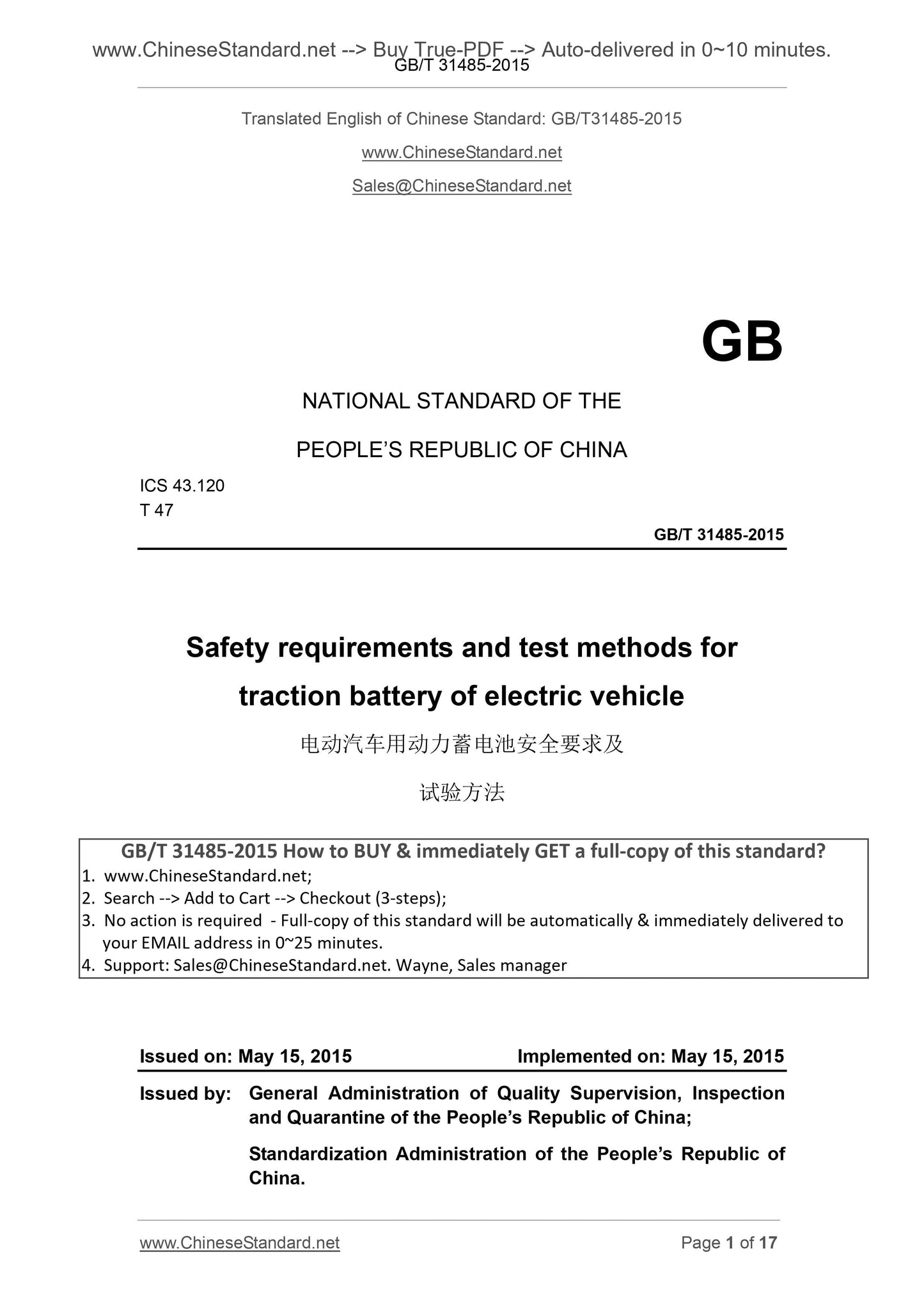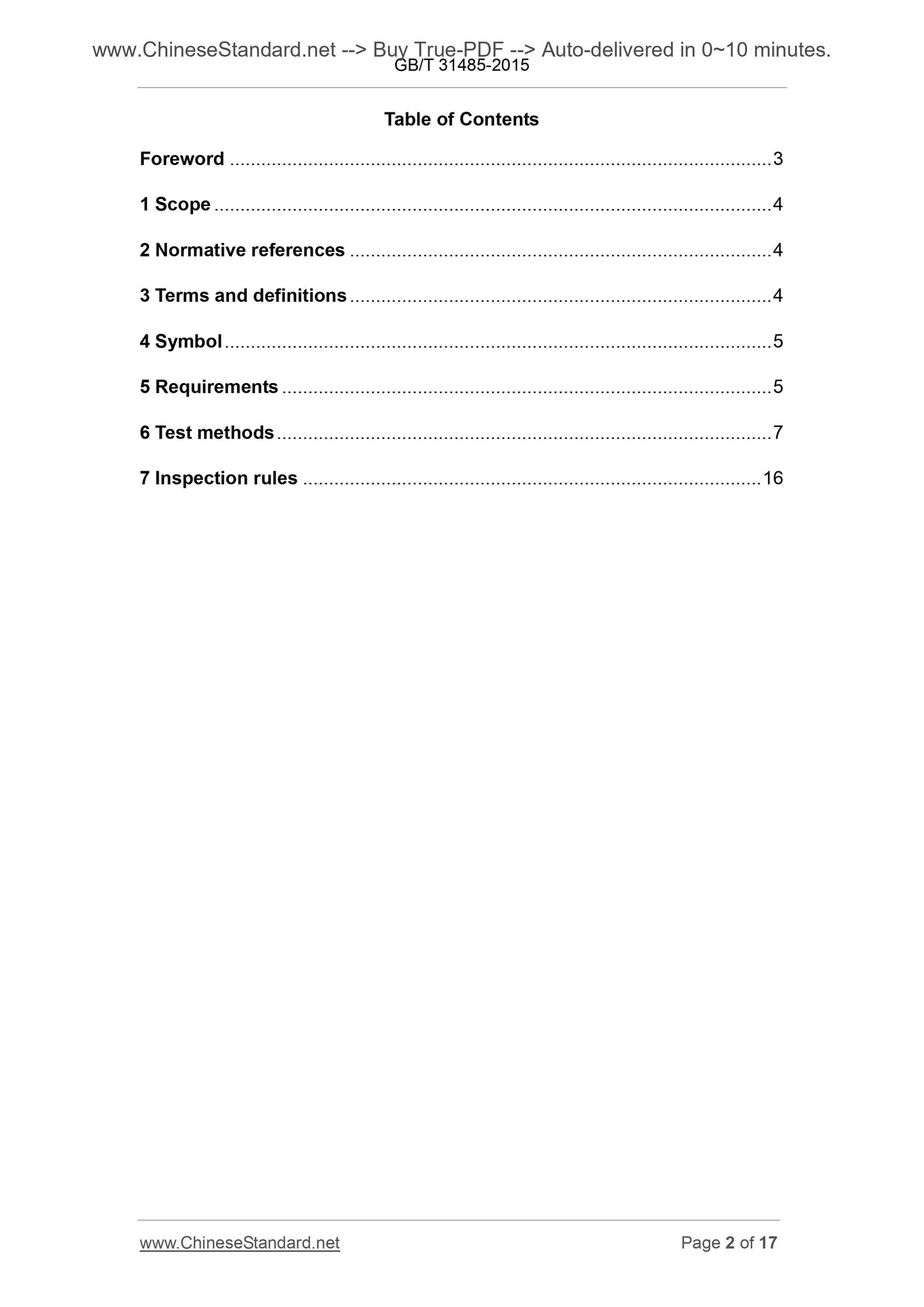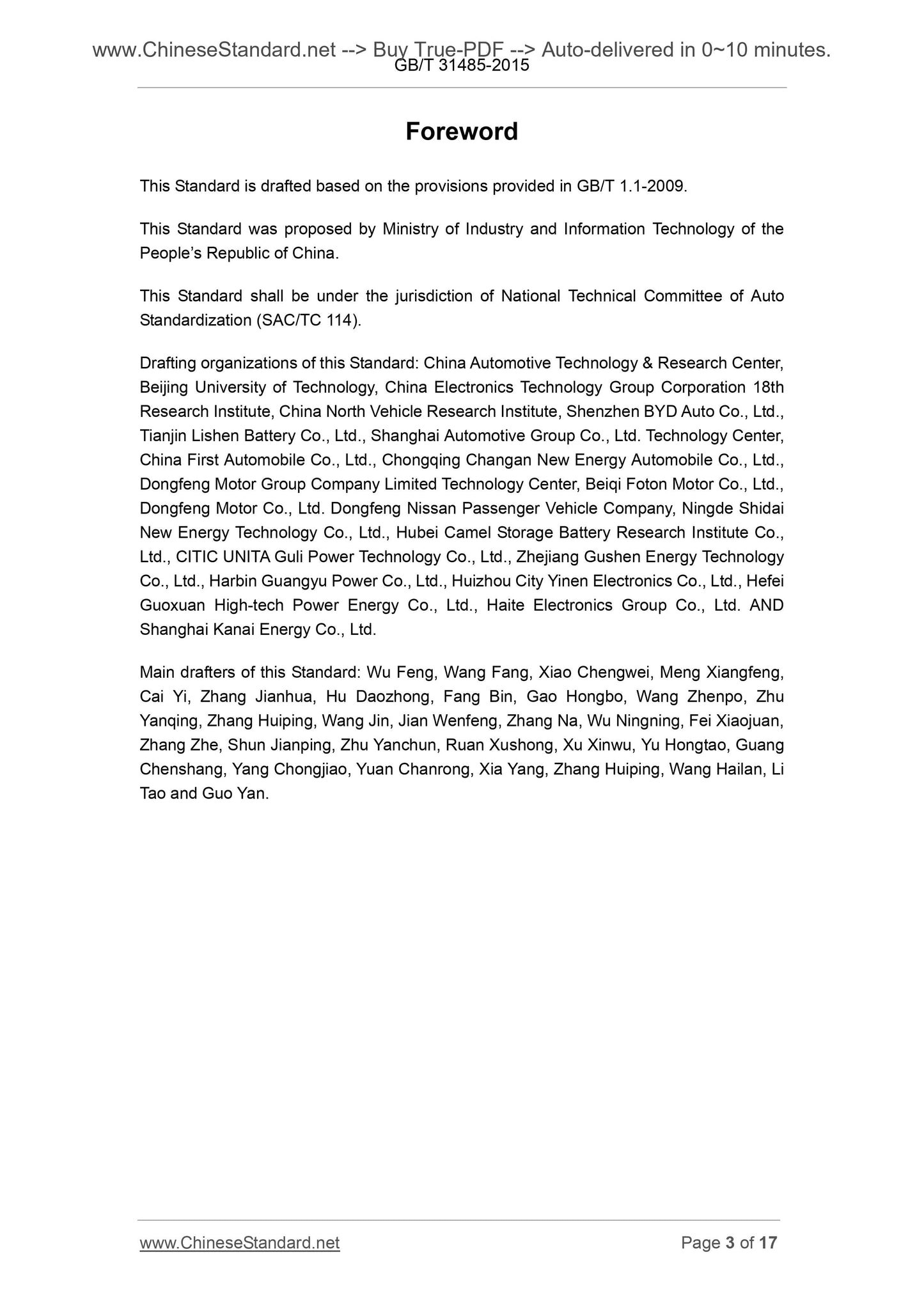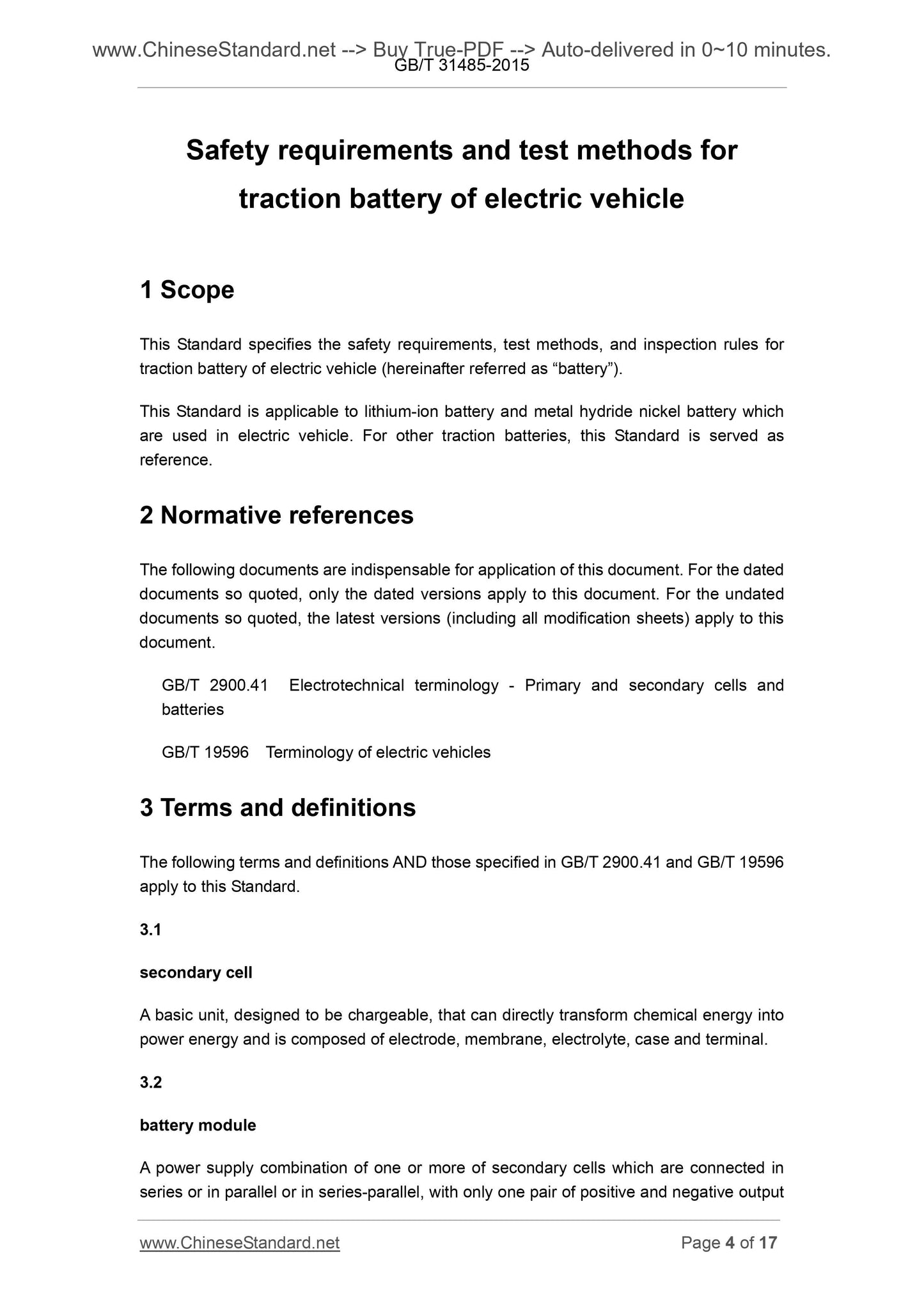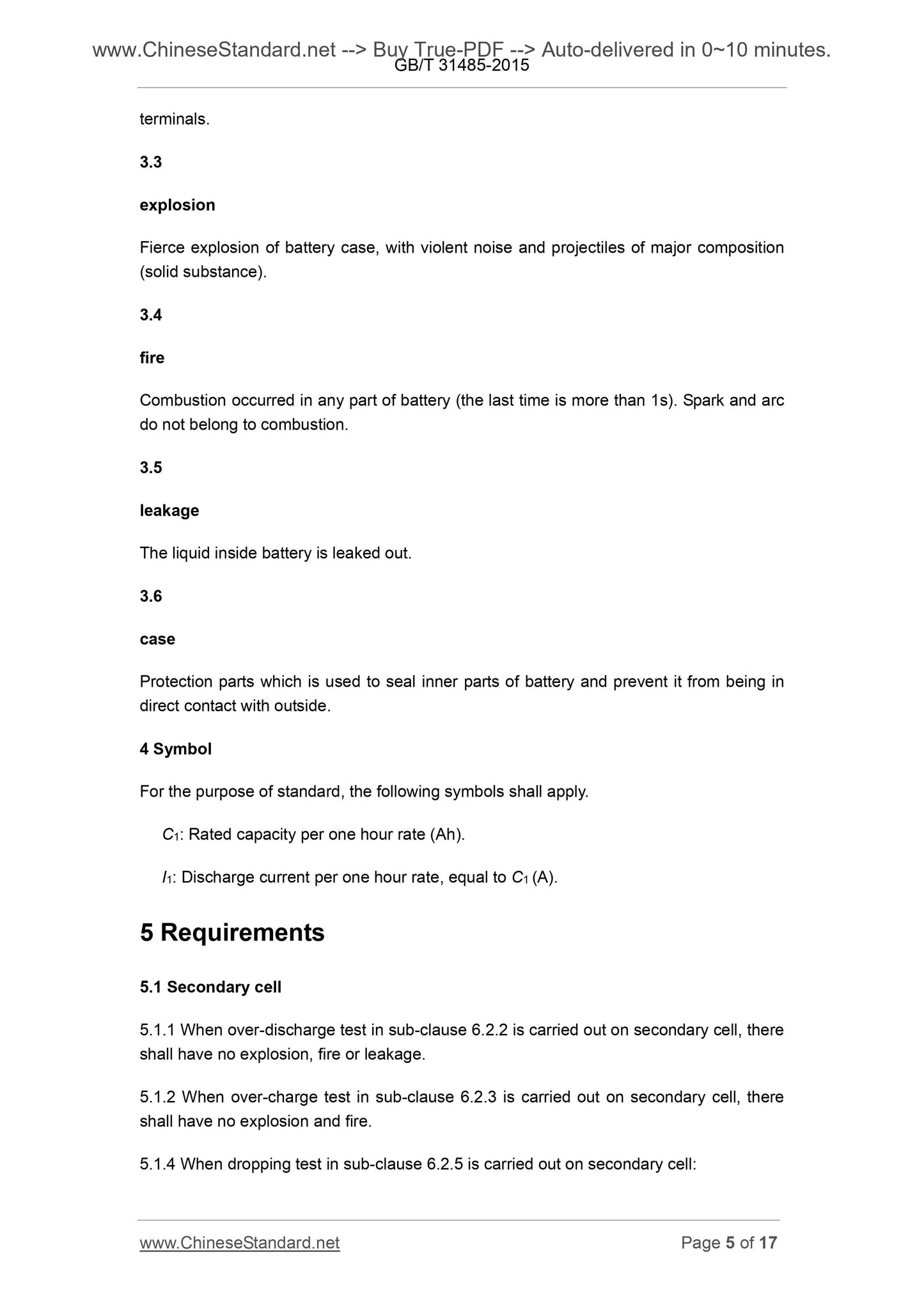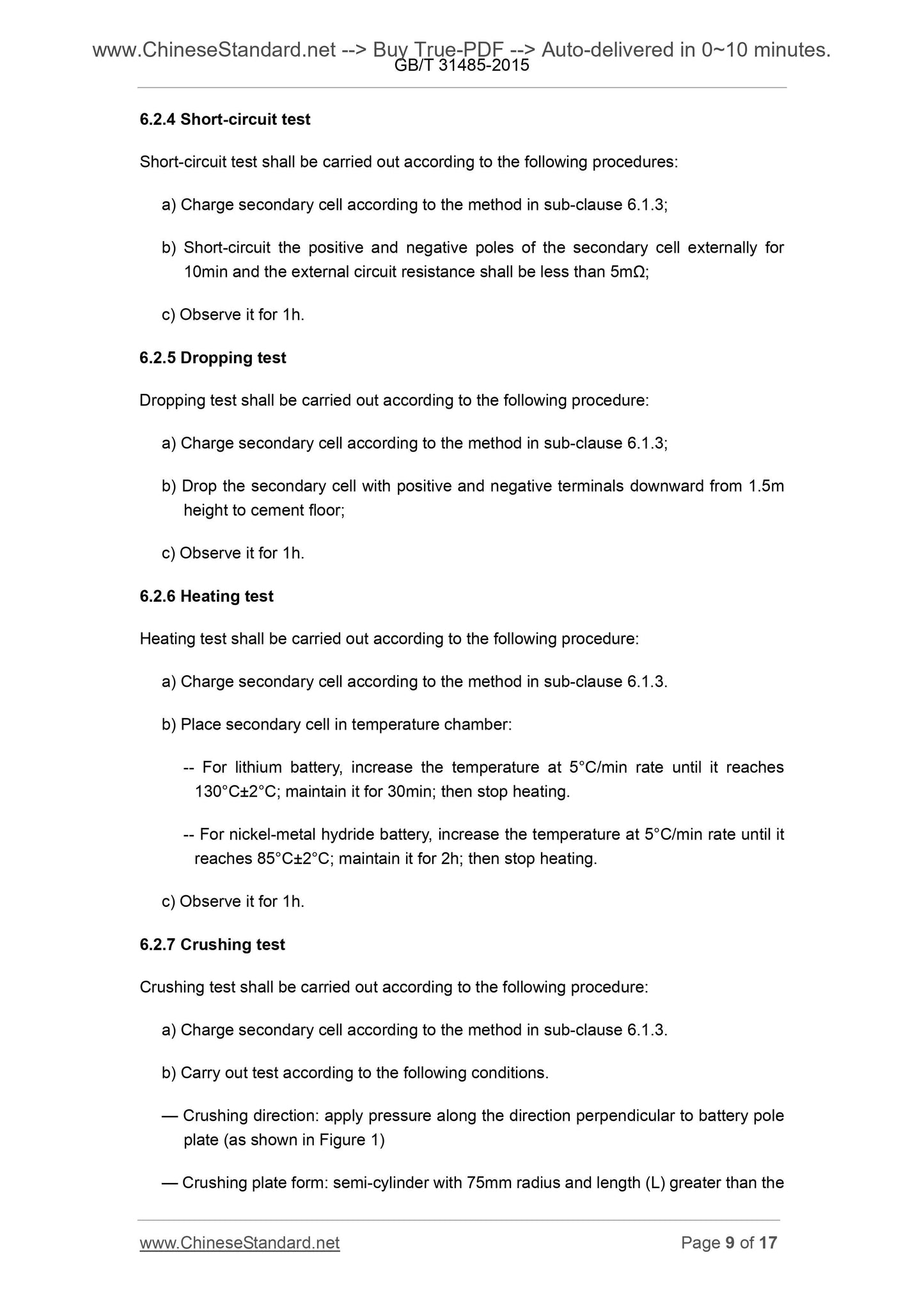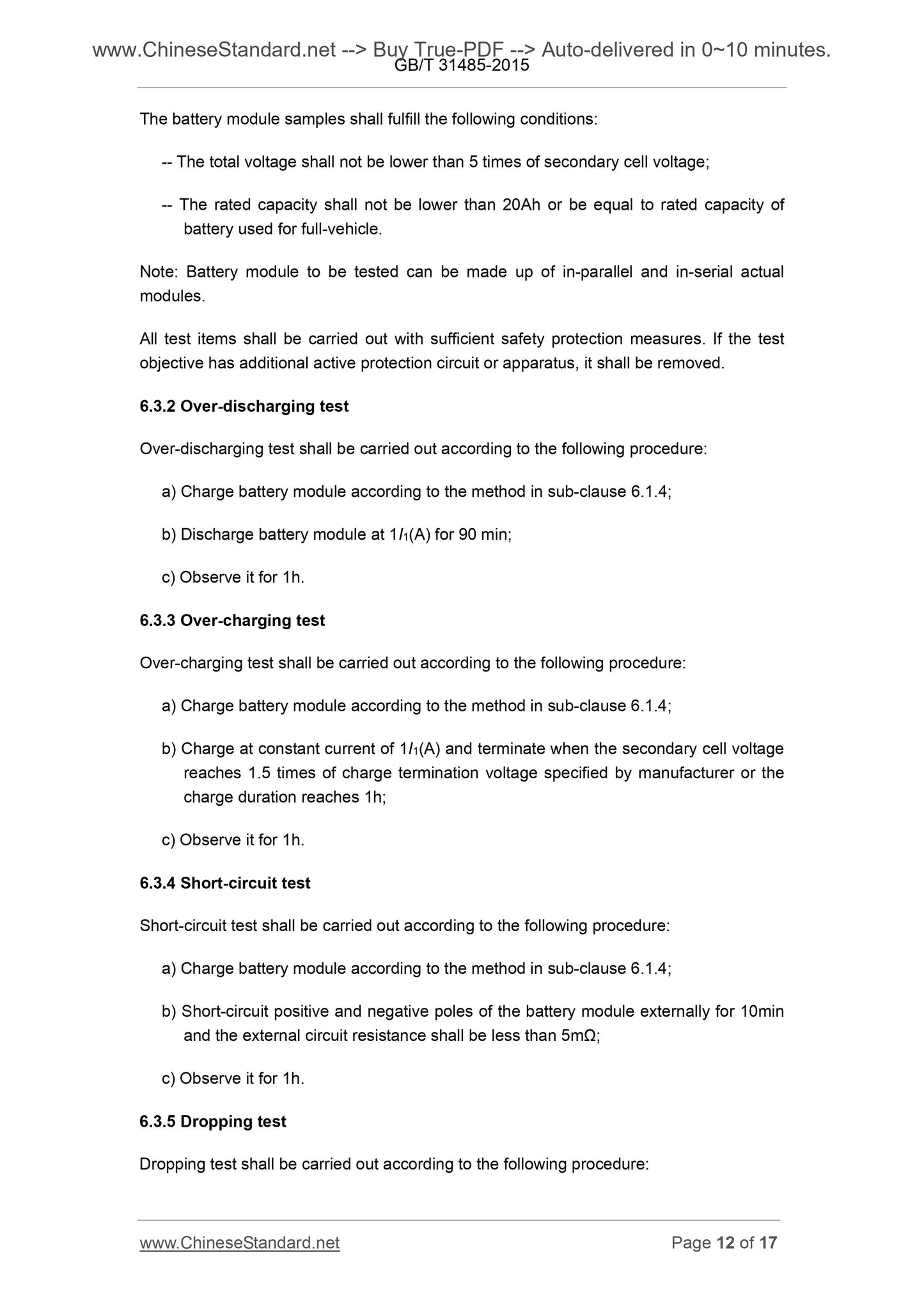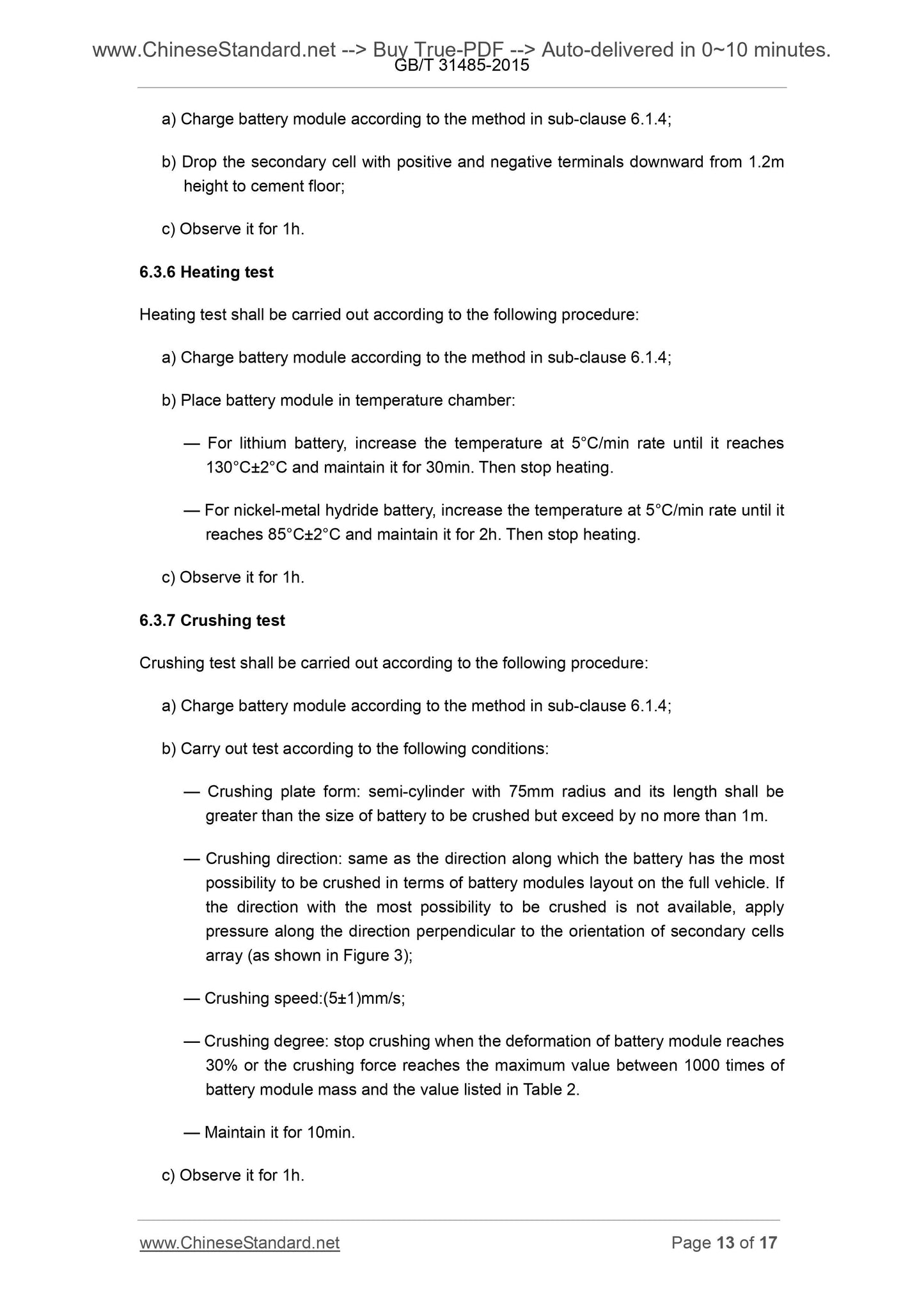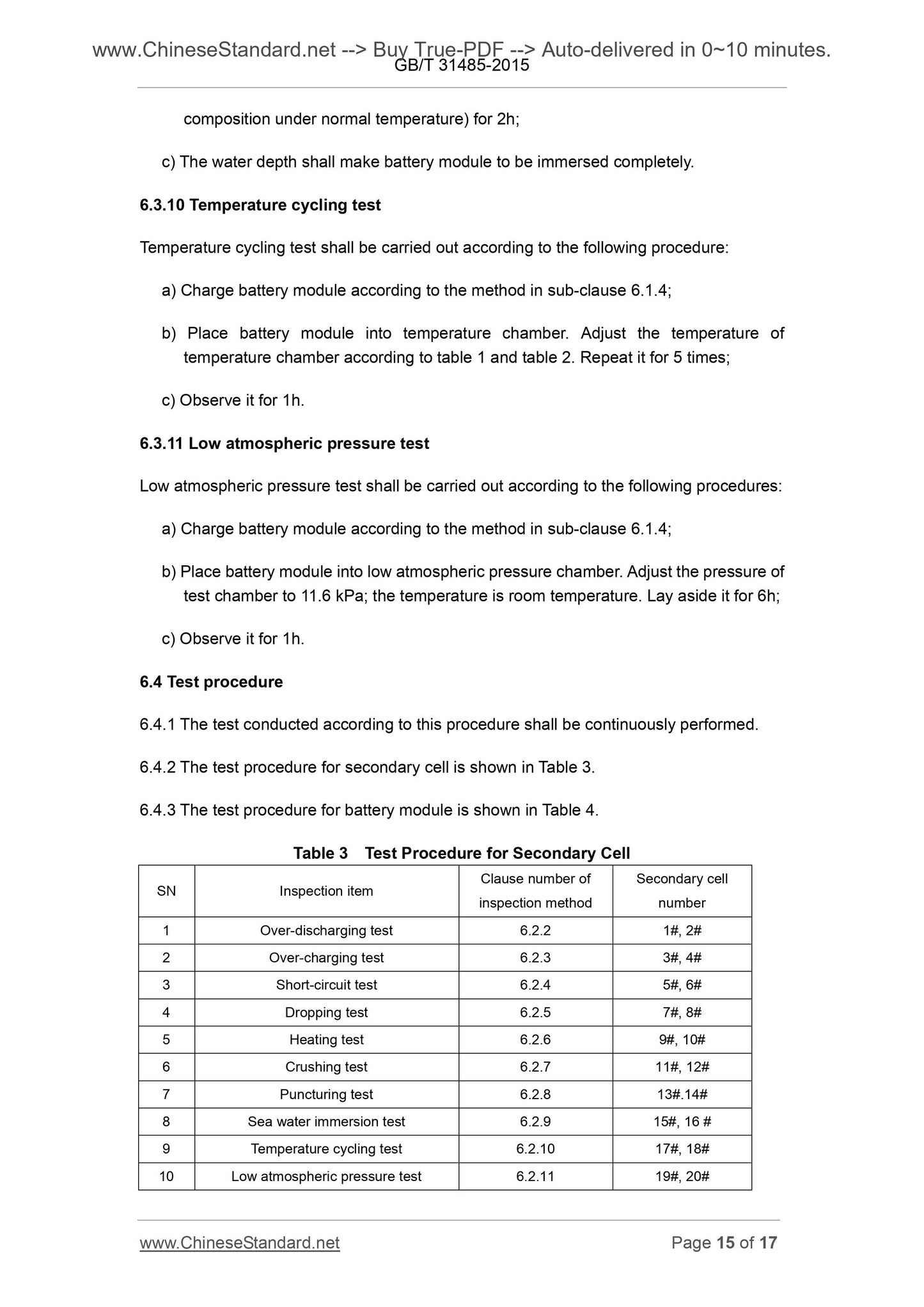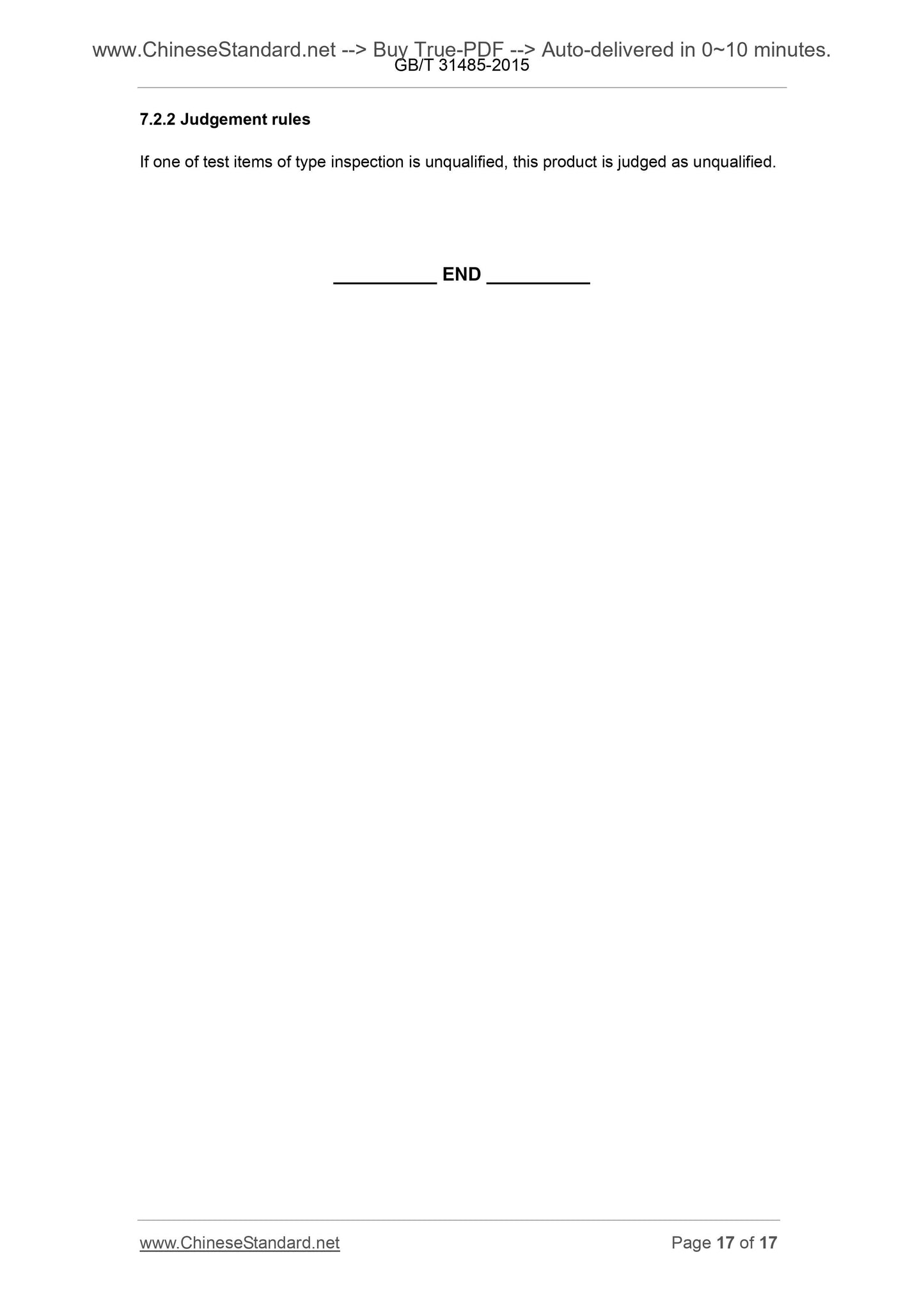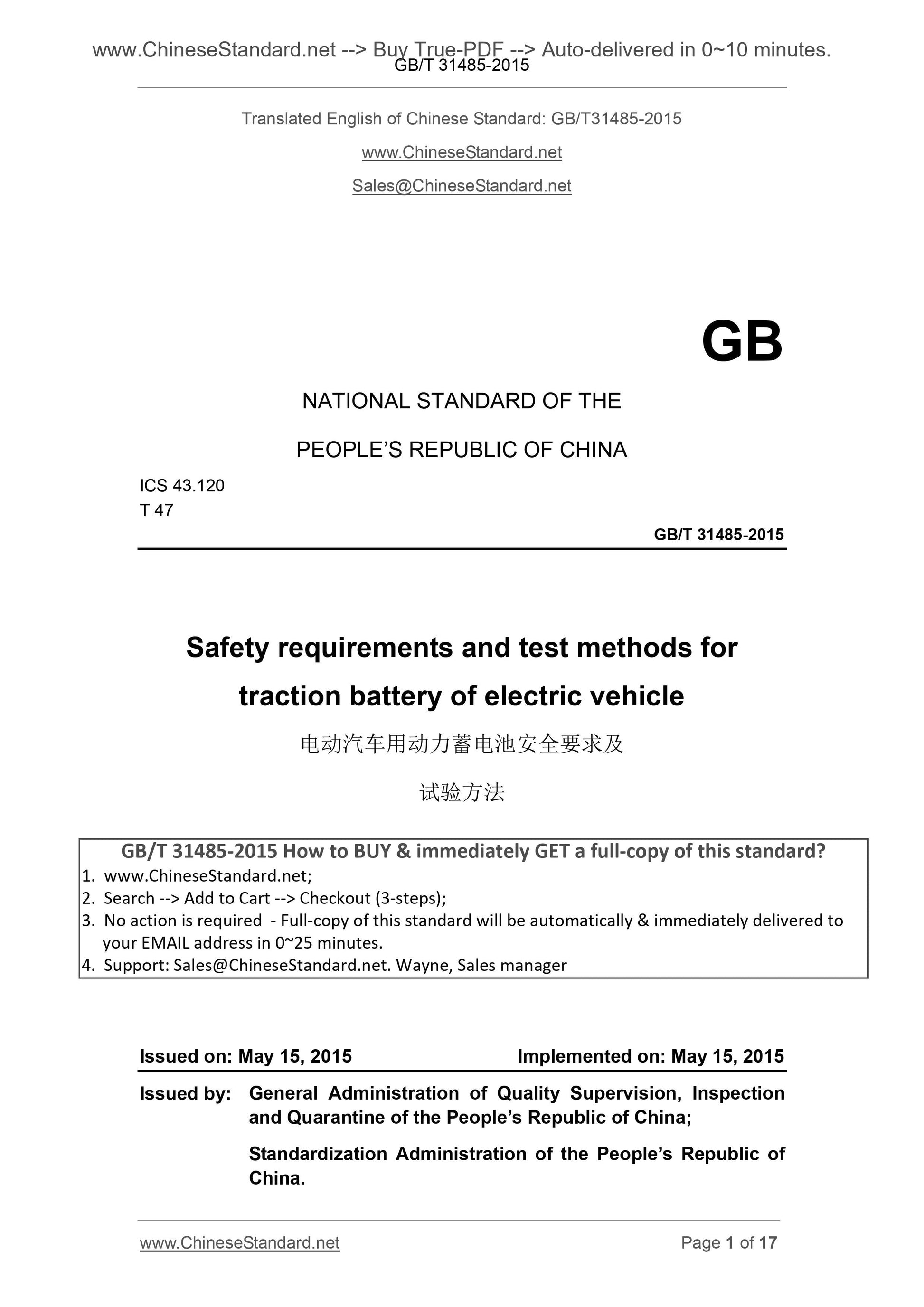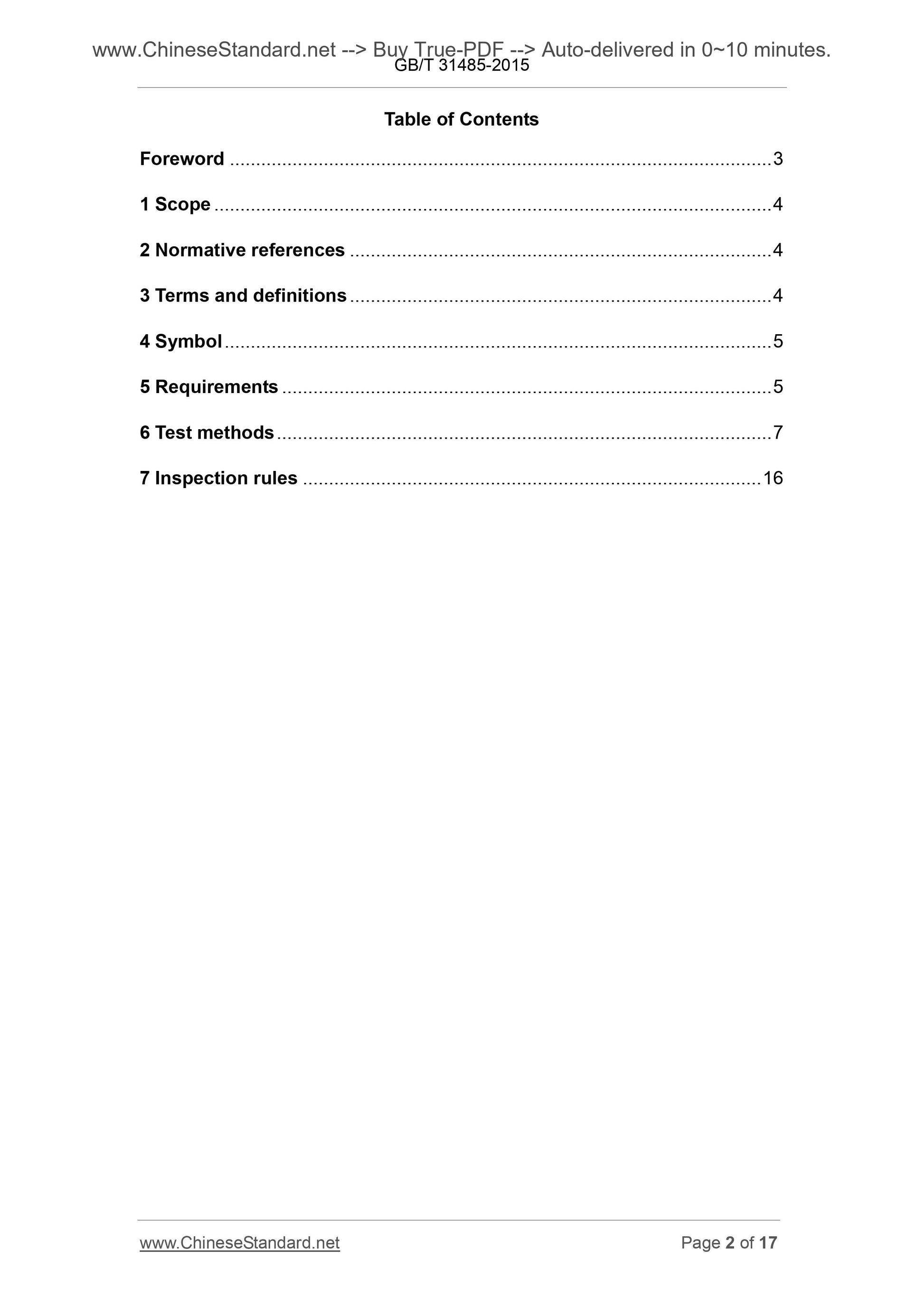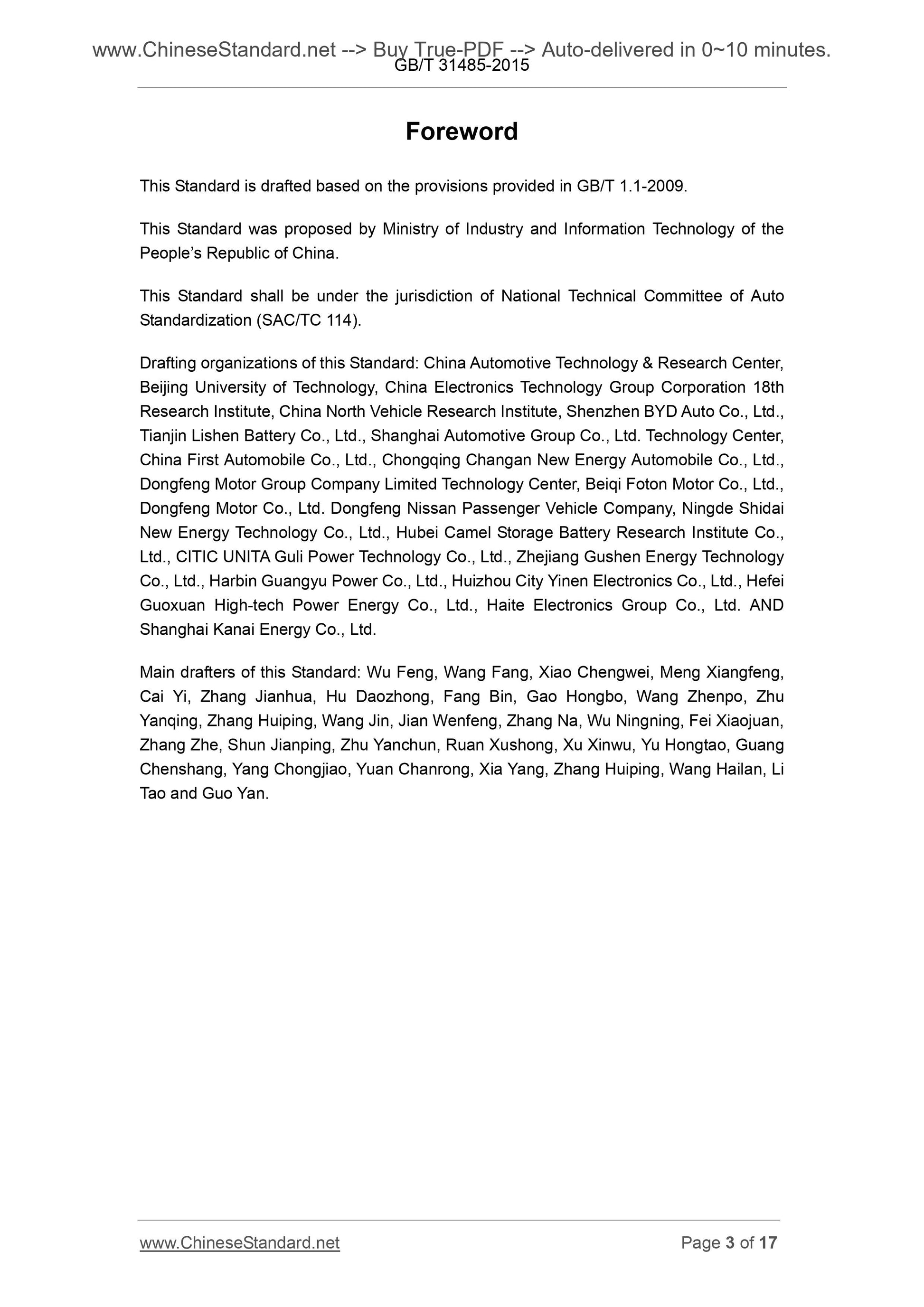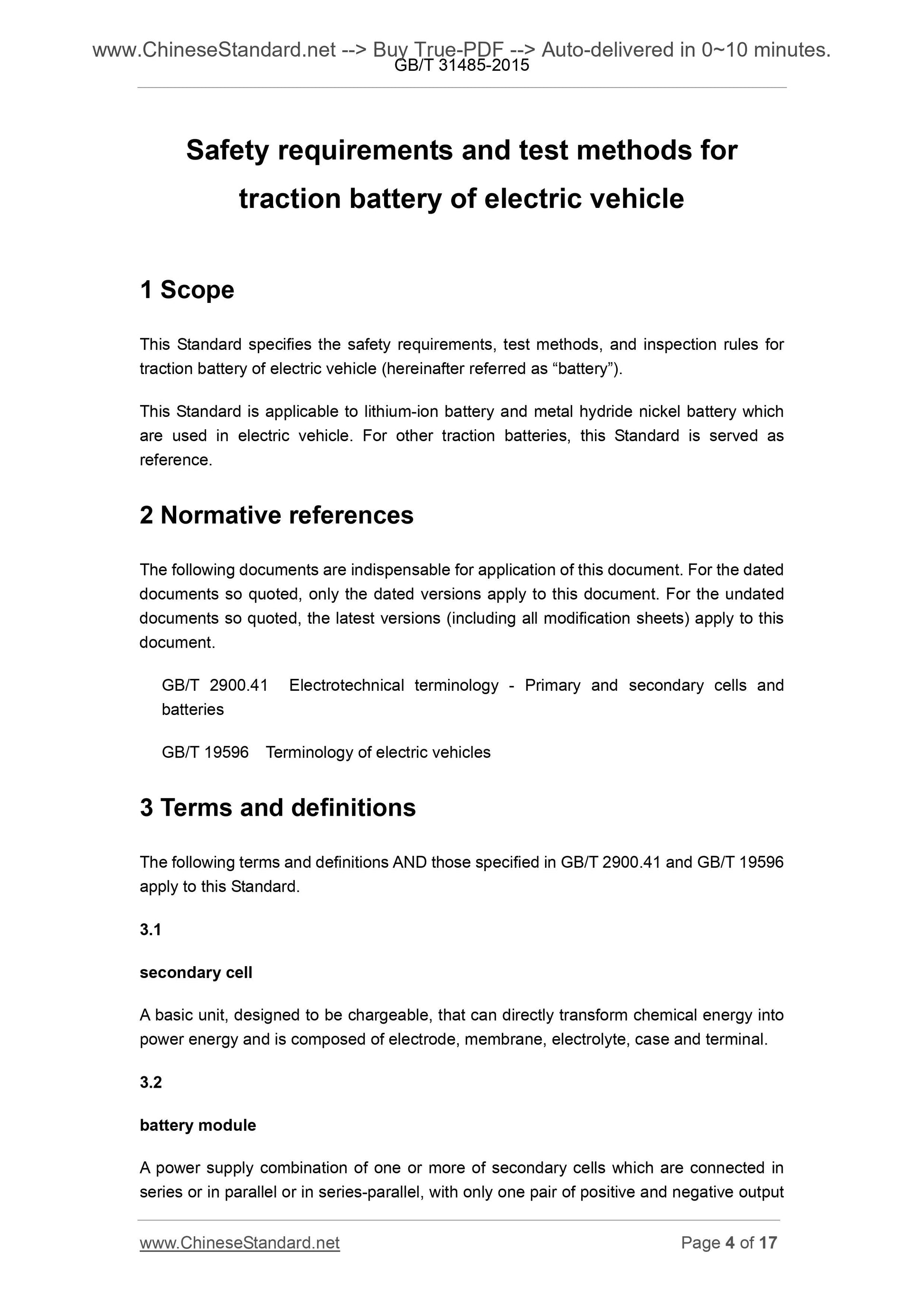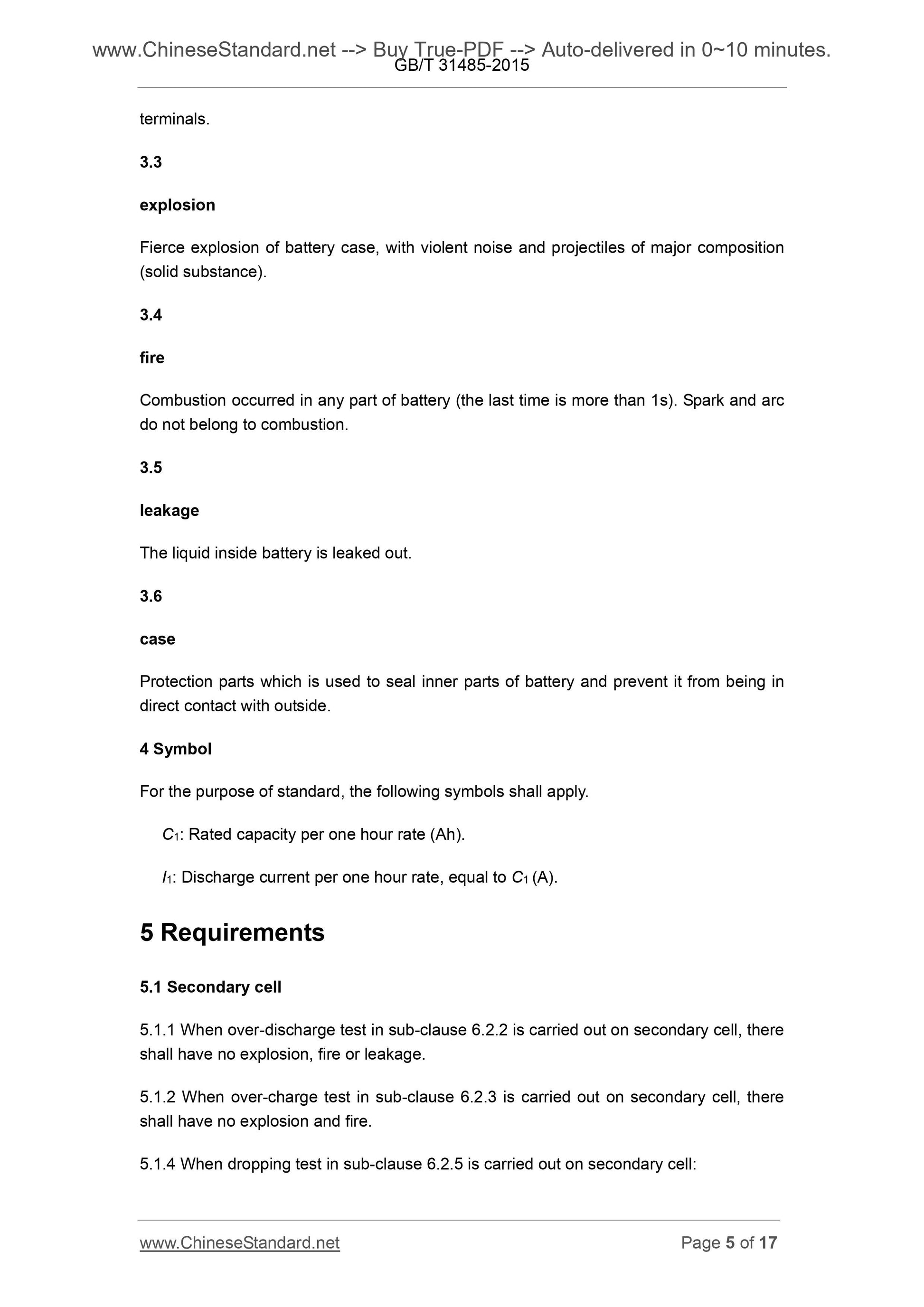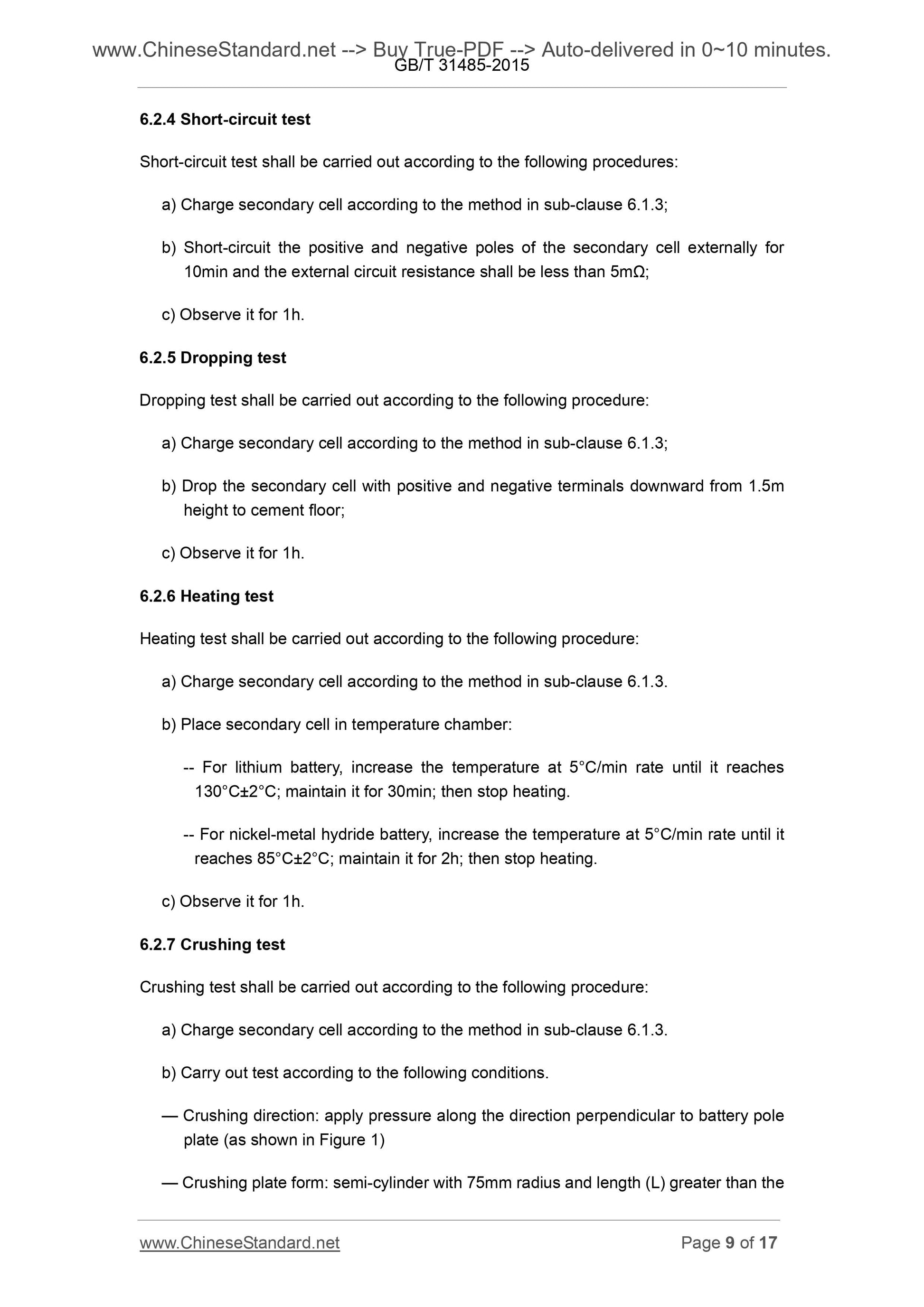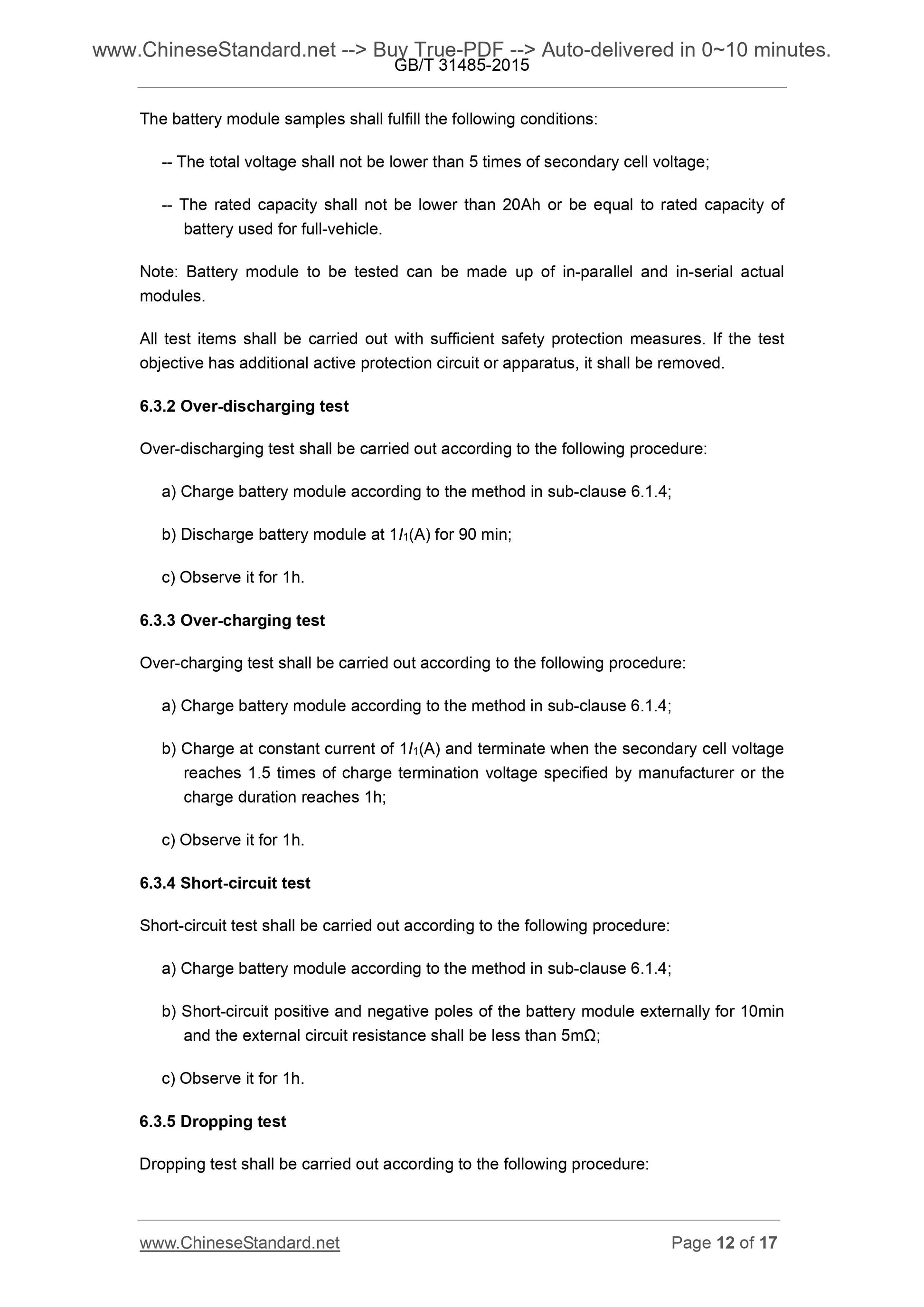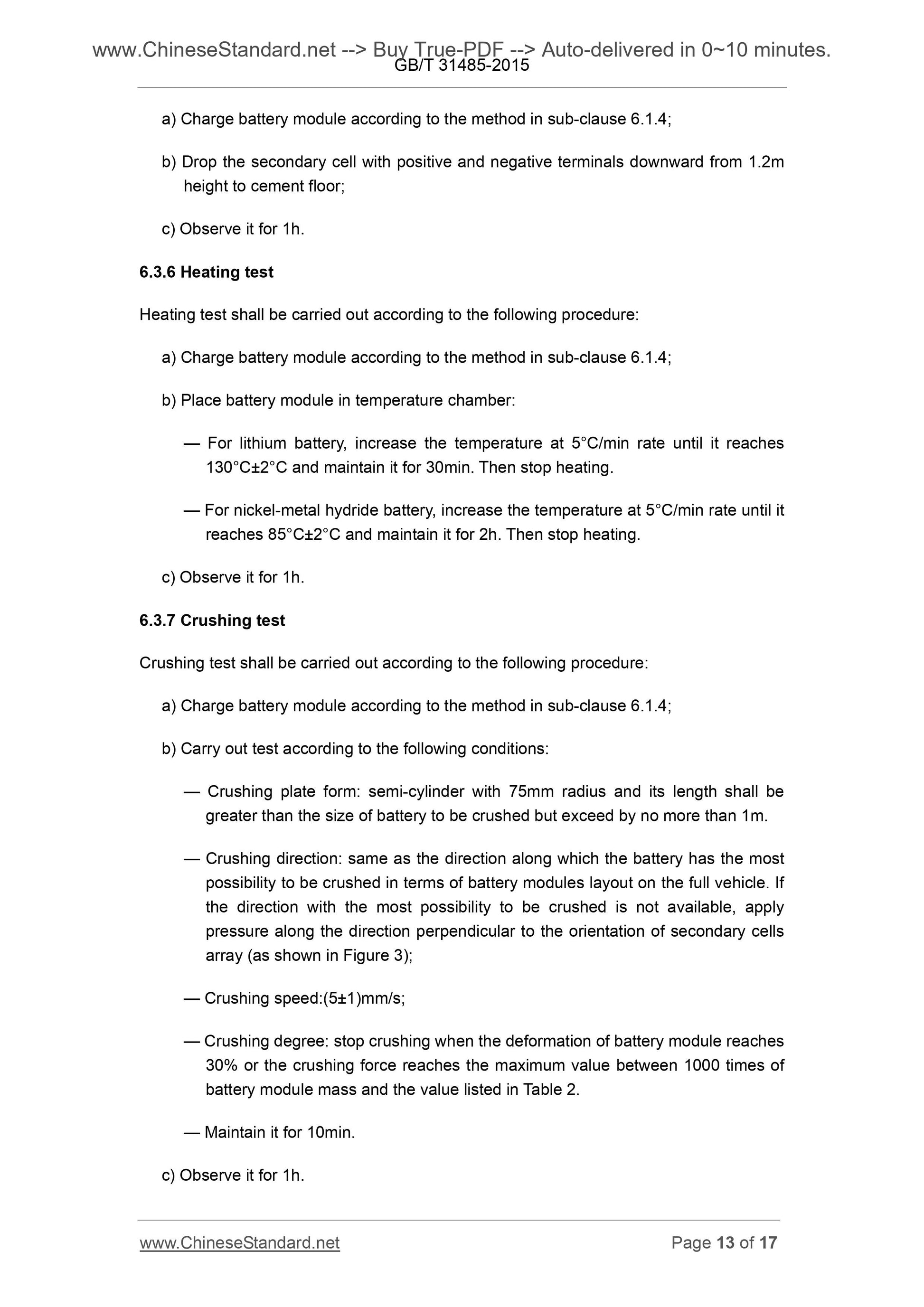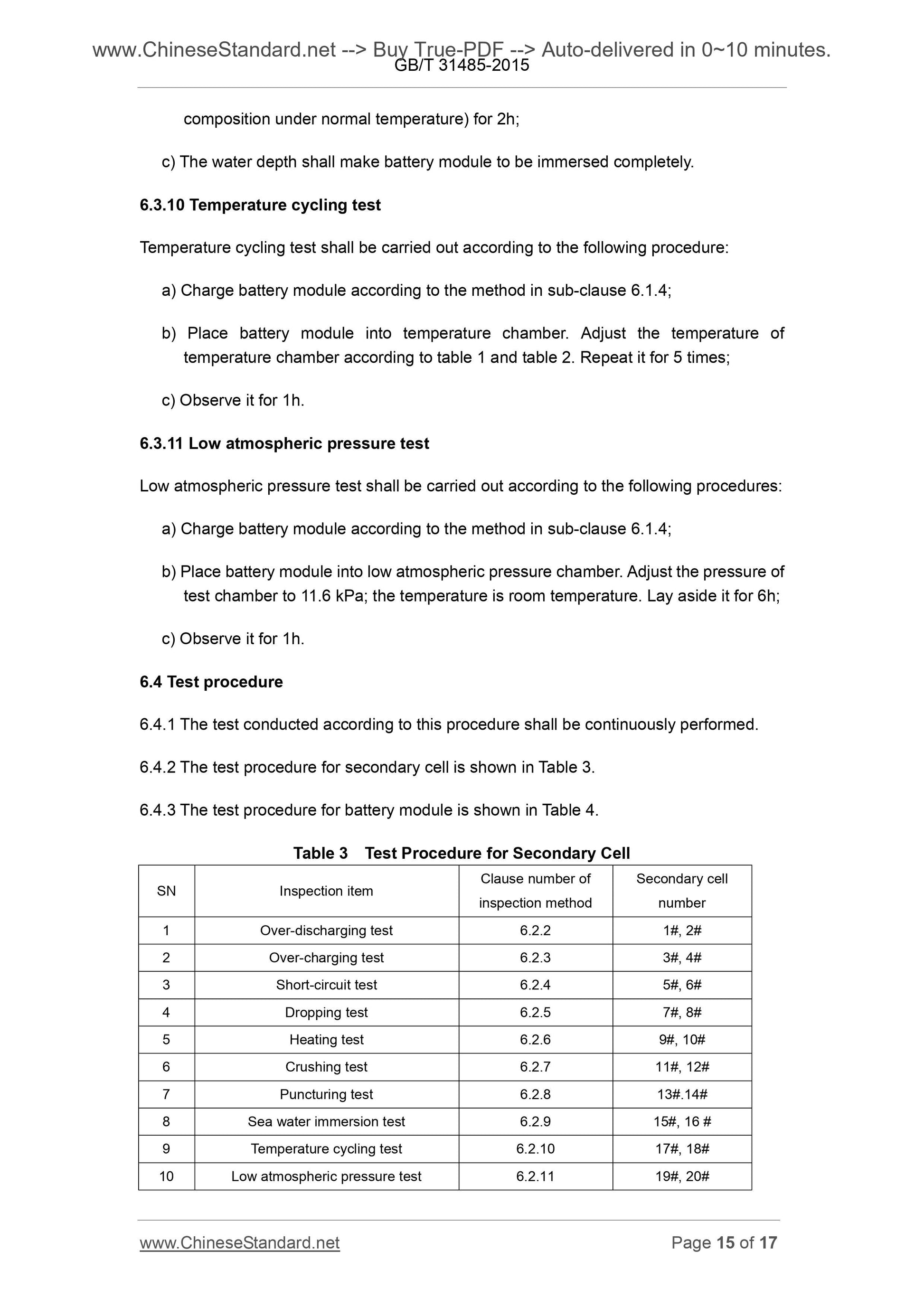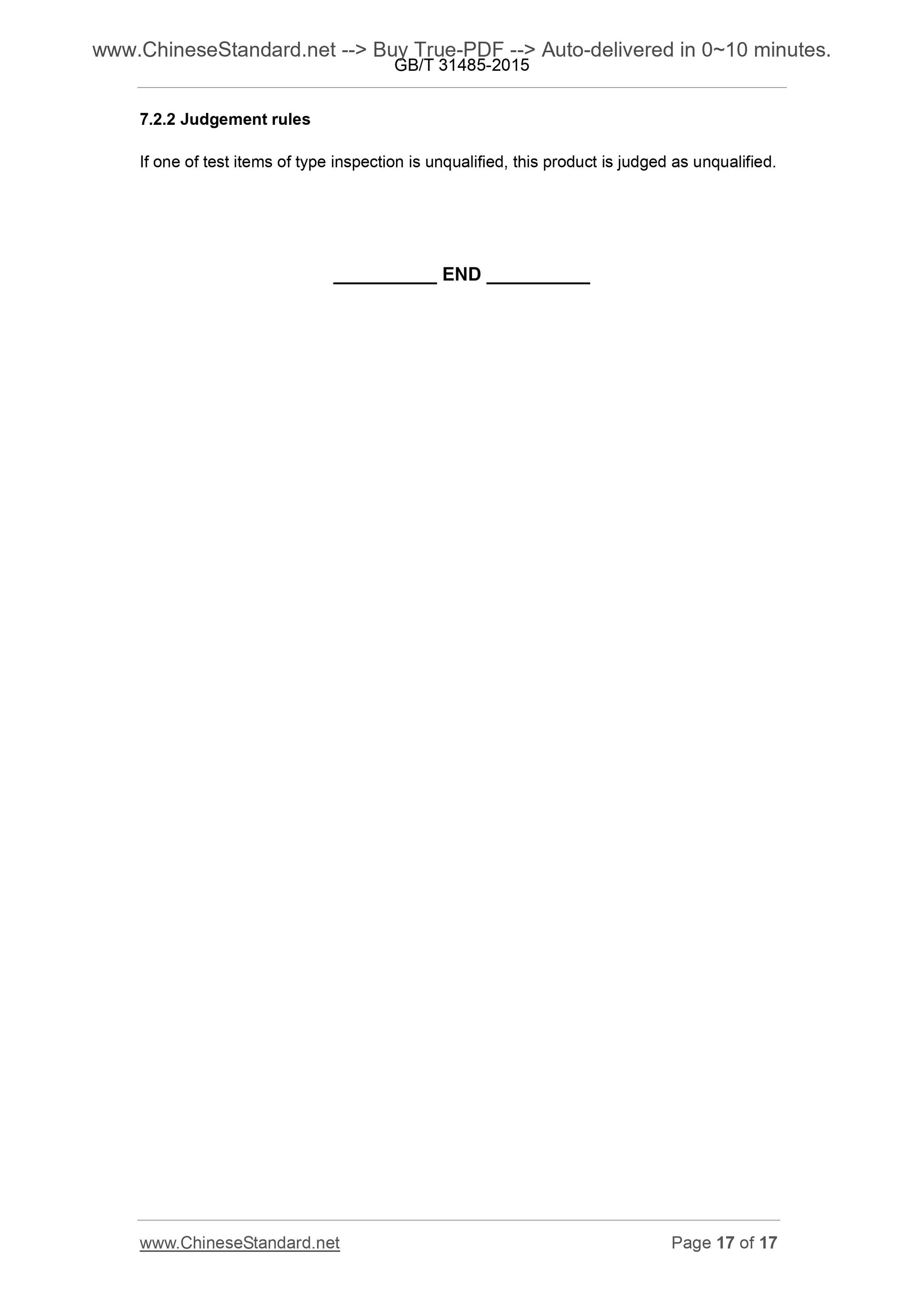1
/
of
10
www.ChineseStandard.us -- Field Test Asia Pte. Ltd.
GB/T 31485-2015 English PDF (GB/T31485-2015)
GB/T 31485-2015 English PDF (GB/T31485-2015)
Regular price
$85.00
Regular price
Sale price
$85.00
Unit price
/
per
Shipping calculated at checkout.
Couldn't load pickup availability
GB/T 31485-2015: Safety requirements and test methods for traction battery of electric vehicle
Delivery: 9 seconds. Download (and Email) true-PDF + Invoice.Get Quotation: Click GB/T 31485-2015 (Self-service in 1-minute)
Newer / historical versions: GB/T 31485-2015
Preview True-PDF
Scope
This Standard specifies the safety requirements, test methods, and inspection rules fortraction battery of electric vehicle (hereinafter referred as “battery”).
This Standard is applicable to lithium-ion battery and metal hydride nickel battery which
are used in electric vehicle. For other traction batteries, this Standard is served as
reference.
Basic Data
| Standard ID | GB/T 31485-2015 (GB/T31485-2015) |
| Description (Translated English) | Safety requirements and test methods for traction battery of electric vehicle |
| Sector / Industry | National Standard (Recommended) |
| Classification of Chinese Standard | T47 |
| Classification of International Standard | 43.120 |
| Word Count Estimation | 13,138 |
| Date of Issue | 2015-05-15 |
| Date of Implementation | 2015-05-15 |
| Quoted Standard | GB/T 2900.41; GB/T 19596 |
| Regulation (derived from) | National Standard Announcement 2015 No. 15 |
| Issuing agency(ies) | General Administration of Quality Supervision, Inspection and Quarantine of the People's Republic of China, Standardization Administration of the People's Republic of China |
| Summary | This Standard specifies the safety requirements for electric vehicle battery power (hereinafter referred to as a battery), test methods and inspection rules. This Standard applies to the load on the electric vehicle lithium-ion batteries and nickel-metal hydride batteries monomer and modules, other types of batteries for implementation. |
Share
